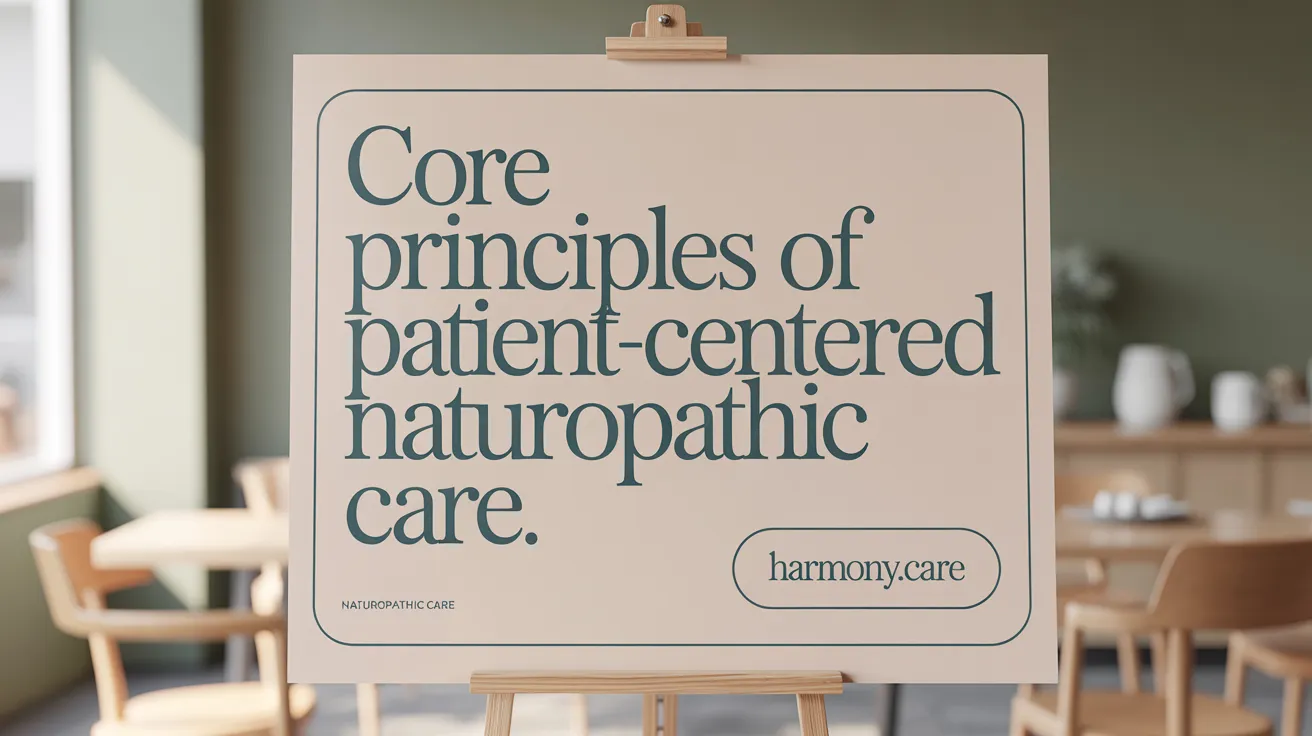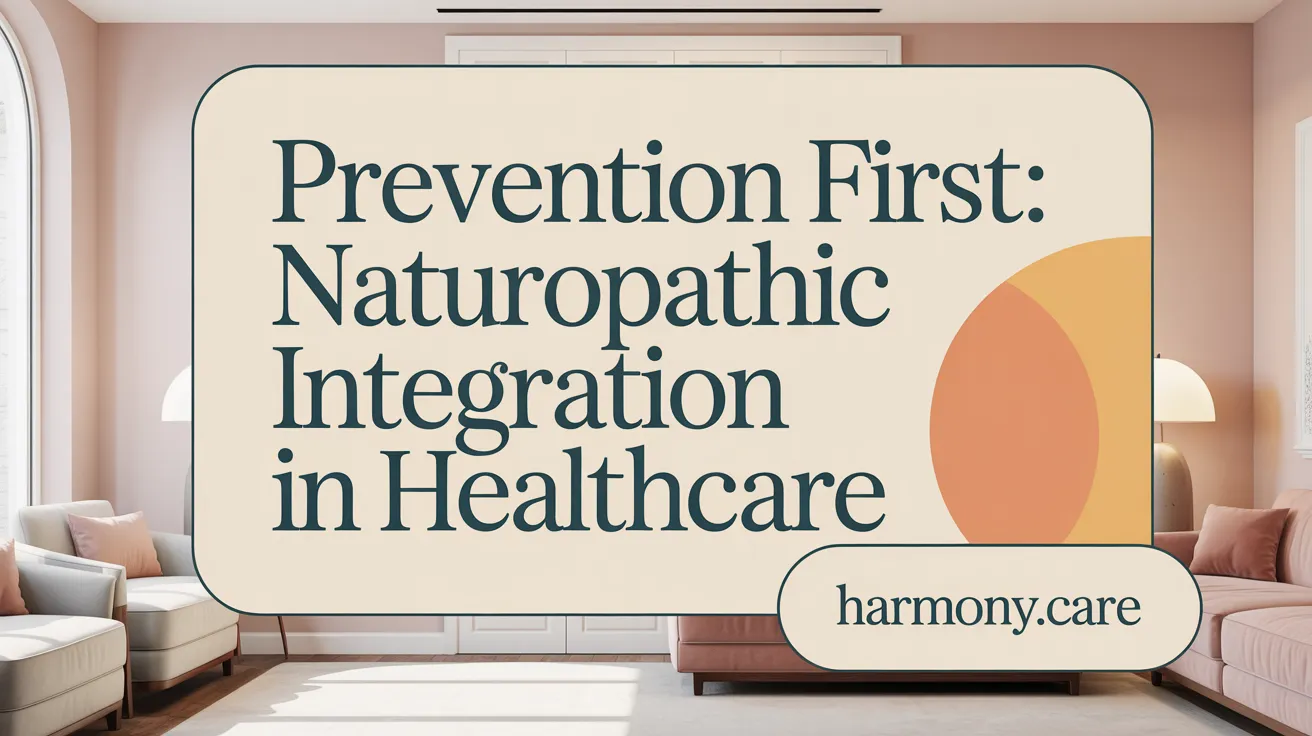Introducing Patient-Centered Naturopathic Care
Naturopathic medicine offers a unique patient-centered care model that prioritizes understanding and treating the whole person rather than just symptoms. Rooted in holistic principles, this approach integrates natural therapies, prevention strategies, and active patient involvement to promote long-term health and wellness. This article explores what patients can expect when engaging with naturopathic doctors (NDs), highlighting the relationship dynamics, treatment philosophies, and the comprehensive care process that sets naturopathy apart.
The Foundations of Patient-Centered Naturopathic Care

What are the core values and principles guiding patient-centered naturopathic care?
Patient-centered naturopathic care is guided by six foundational principles: First Do No Harm, The Healing Power of Nature, Identify and Treat the Causes, Doctor as Teacher, Treat the Whole Person, and Prevention. These principles prioritize therapies that are natural, minimally invasive, and least toxic, focusing on addressing the root causes of illness rather than merely alleviating symptoms.
How does naturopathic care embrace a holistic treatment approach?
Naturopathic medicine views health as an interconnected state involving the physical, mental, emotional, spiritual, social, and environmental aspects of a person. Treatment plans account for all these factors, enabling individualized care that promotes wellness and encourages the body's inherent ability to heal itself.
What is the importance of the ND-patient relationship in naturopathic care?
The relationship between a naturopathic doctor (ND) and patient is fundamental. It is grounded in trust, open communication, and shared decision-making. NDs spend significant time with patients to thoroughly understand their health stories, enabling collaborative planning that respects patient preferences and values.
How does patient empowerment and education fit into naturopathic practice?
NDs serve as educators who empower patients through comprehensive health education. This teaching role fosters patient self-care, helping individuals understand their bodies and actively participate in managing their health, reinforcing a partnership in care.
Why are trust and collaboration essential in naturopathic treatment?
Trust and collaboration build a strong therapeutic alliance that enhances treatment effectiveness. Open dialogue ensures that patients are partners in their health journey, improving adherence to personalized care plans and ultimately leading to better health outcomes.
What Happens During Your First Visit with a Naturopathic Doctor

How long is the first visit with an ND, and what does it involve?
The first appointment with a naturopathic doctor (ND) usually lasts between 60 and 120 minutes. This is considerably longer than typical visits with conventional doctors. The extended time frame is necessary to conduct a thorough evaluation of the patient's overall health. First visit with a naturopathic doctor
During this initial consultation, the ND takes a deep dive into the patient’s medical history and current health issues. This includes reviewing all body systems, discussing medications and supplements, and assessing lifestyle factors such as diet, sleep quality, stress levels, and relationships. Emotional and mental health are also explored to understand their impact on the patient’s well-being. Naturopathic physician approach
Comprehensive patient history and lifestyle assessment
The naturopathic approach emphasizes understanding the whole person, not just isolated symptoms. This holistic review considers genetic, environmental, behavioral, and emotional aspects that may contribute to illness. It helps NDs identify underlying imbalances and root causes rather than merely treating symptoms. Treat the Whole Person
Diagnostic evaluations and testing
Naturopathic doctors may order diagnostic tests such as blood work, hormone panels, food sensitivity testing, or imaging to gather more precise information about the patient’s condition. These tests support evidence-based treatment planning and help monitor progress. Naturopathic care overview
Collaborative development of individualized treatment plans
After gathering all relevant information, the ND and patient work together to create a personalized care plan. This plan often includes lifestyle modifications, nutritional guidance, supplementation, stress management techniques, and natural therapies like botanical medicine or physical treatments. The process is collaborative, respecting the patient’s unique goals, resources, and preferences. Collaborative healthcare with NDs
Setting patient expectations for care
NDs educate patients about the principles of naturopathic medicine, including the focus on prevention, self-healing, and treating root causes. They emphasize patient empowerment and encourage active participation in health decisions. The longer initial visit sets the foundation for a trusting and communicative doctor-patient relationship crucial for successful outcomes. ND-patient relationship fundamentals
Holistic, Individualized Treatments Rooted in Evidence and Tradition

What types of treatments and modalities are used in patient-centered naturopathic care?
Naturopathic care embraces a broad spectrum of therapies that prioritize natural, minimally invasive approaches. The treatment modalities include clinical nutrition and dietary counseling, botanical medicine, homeopathy, acupuncture, physical medicine such as hydrotherapy and massage, and mind-body therapies. This spectrum of treatments is applied following the "Therapeutic Order", a guiding principle which recommends starting with the least aggressive interventions that support the body's inherent self-healing ability.
Lifestyle changes form the foundation of naturopathic treatment plans, emphasizing nutrition, physical activity, stress management, and behavioral adjustments. These are complemented as needed by natural therapies, helping address the root causes rather than just symptoms. Such an approach allows naturopathic doctors (NDs) to offer individualized care that reflects each patient's genetic background, environmental exposures, and lifestyle circumstances.
Naturopathic medicine is frequently integrated with conventional medical care through collaboration and co-management with other healthcare providers. This collaboration enhances patient outcomes by combining the strengths of both natural and conventional therapies while ensuring safety and coordinated care.
The conditions most often addressed through naturopathic patient-centered care include allergies, chronic pain, digestive disorders, hormonal imbalances, mental health conditions such as anxiety and depression, autoimmune diseases, and chronic fatigue. Each treatment regimen is carefully tailored to the individual, aimed at fostering holistic wellness, empowering self-care, and prioritizing disease prevention.
Building a Collaborative Partnership to Empower Patients

How does the ND-patient relationship foster patient empowerment and better health outcomes?
The relationship between a naturopathic doctor (ND) and their patient is deeply rooted in trust, open communication, and shared decision-making. This strong partnership positions patients as equal and active contributors to their health journey. Unlike typical short medical visits, NDs often spend up to two hours in initial consultations, diving deeply into the patient’s health concerns, history, lifestyle, and personal preferences (ND-patient relationship).
This extended time allows for a thorough understanding of the individual as a whole person—not just symptoms—encouraging patients to participate actively in decisions regarding their treatment plans. NDs also take on the role of teacher, educating patients about the root causes of health issues, potential therapies, and preventive strategies (Doctor as Teacher Principle). This education empowers patients with the knowledge needed to engage in effective self-care and make informed lifestyle changes (patient-centered care).
Effective communication is central to this relationship, enabling the building of trust and ensuring patients feel heard, respected, and supported. Such patient-centered communication fosters better health outcomes by aligning treatment with the patient's values and goals (communication for better health outcomes).
Research repeatedly supports that patient-centered care, like that practiced by NDs, not only leads to improved recovery, reduced reliance on unnecessary diagnostic tests and procedures, and cost savings but also enhances patient satisfaction and engagement (Patient-centered care outcomes).
In summary, the ND-patient partnership is a collaborative, educative, and trusting alliance that motivates patients toward proactive health management and better overall outcomes (Naturopathic doctor-patient relationship.
Preventive Focus and Integration Within Healthcare Systems

How does naturopathic care integrate prevention and collaborate with other healthcare providers?
Naturopathic medicine strongly emphasizes prevention and wellness as foundational elements of care. Naturopathic doctors (NDs) employ proactive screening and risk factor assessment techniques, including monitoring fasting blood glucose levels to detect diabetes risk, lipid profiles for cardiovascular health, and age-appropriate cancer screenings such as mammograms and colonoscopies based on family history.
Treatment plans are tailored to prevent the development and progression of chronic diseases such as type 2 diabetes, cardiovascular conditions, strokes, and certain cancers by optimizing lifestyle factors like diet, physical activity, and stress management. This preventive approach helps reduce reliance on more invasive or pharmaceutical interventions and supports the body's natural healing processes.
NDs undergo rigorous education through accredited four-year doctoral programs and licensing processes, equipping them with primary care and holistic treatment skills (Naturopathic doctor qualifications). In many regions, licensed naturopaths operate collaboratively within integrated care models alongside conventional medical professionals (Integration of naturopathy with conventional medicine). This teamwork enables comprehensive patient management, with naturopaths providing complementary natural therapies and referring patients to specialists when necessary.
The increasing acceptance of naturopathic medicine is further evidenced by expanding insurance coverage and licensure across multiple states and countries, improving patient access to this integrative care. This collaboration and preventive focus contribute to a holistic, patient-centered healthcare system that supports wellness and optimized health outcomes.
Embracing a Holistic, Patient-Centered Path to Wellness
Patient-centered naturopathic care offers a distinct, holistic approach that emphasizes treating the whole person through individualized, evidence-informed therapies rooted in natural healing principles. The extended initial visits and collaborative partnership foster deep understanding and patient empowerment, which translate into improved health outcomes and satisfaction. With its strong preventive focus and growing integration alongside conventional medicine, naturopathy supports sustainable wellness aimed at addressing root causes, promoting self-healing, and ultimately empowering patients to take control of their health journeys.
